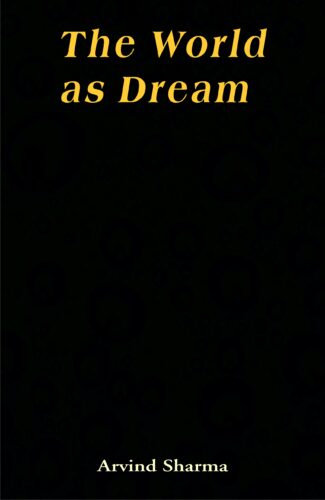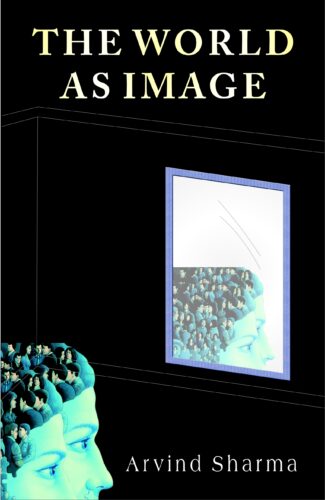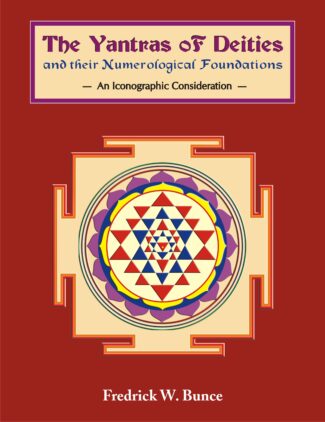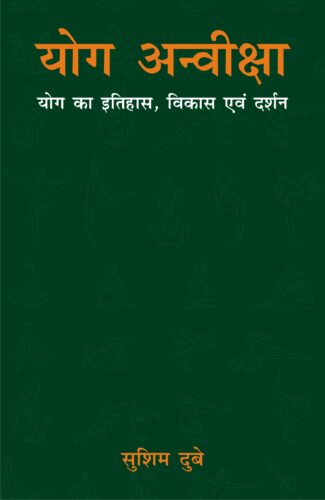Showing 1141–1150 of 1176 results

There is no shortcut to success other than hard-work. The 100 enlightening quotes on Work in this book are a cornucopia of wisdom that drives off laziness and vitalizes one to run towards his target. Each quote finds its reflection in a stimulating painting of Lord Ganesha, the Lord of Peace, Prosperity and Wisdom.
Work is worship. The authors highlight through this book Work the significance of hard-work and underline its importance to achieve success in life. There is no shortcut to success other than hard-work. To elucidate this concept, the authors have presented 100 carefully chosen quotes on Work. Each quote is accompanied by a stimulating painting of Lord Ganesha, the Lord of Peace, Prosperity and Wisdom. Some of these thought-provoking and ever-inspiring quotes are from highly acclaimed personalities, who have significantly contributed to the well-being of the universe. Hard-work brings forth greater chances of success in one’s life.
God helps those who help themselves and lazy hands make for poverty, but diligent hands bring wealth are some of the adages that propagate the vitality of hard-work.There is no alternative to hard-work. Whatever man has achieved so far is the result of his relentless effort and hard-work. It ultimately brings welfare to the mankind.

Book exploring the names nuances of the theme of World as Dream in all its richness to establish the plausibility of the philosophers position that though the world appears to be real might turn out to be false like a dream.
The ontological status of the world has been a subject of much philosophical speculation despite the fact that the world is an existential given. According to some philosophers, such existential givenness could turn out to be comparable to the earth’s apparent flatness, with the actual truth turning out to be the very opposite of what it seems. Philosophers often cite the experience of a dream to establish the plausibility of their position that the world might appear to be real while it is being experienced, and yet turn out to be ultimately false like a dream. This motif plays a particularly important role in schools of philosophy in the East and the West which are idealistic in their orientation.
This book explores the nuances of the theme of the world as dream in all its richness.

Book exploring one of Advaita Vedantas central illustrative themes with which it tries to render its doctrines credible in the face of our experience of plurality and variety in life.
There is something profoundly counter-intuitive about Advaita Vedanta. Nothing is more obvious to both the philosophical as well as the non-philosophical observer than the fact that multiplicity constitutes the basic datum of our experience. Variety is not only the spice of life it is a cardinal fact of life. The doctrines of Advaita Vedanta shock us by flying in the face of this fact and by denying any ultimacy to that plurality and variety which we experience so intimately. This naturally raises the question: how does Adavita Vedanta render its doctrines credible in the face their apparent implausibility. This book is an exploration of one of its central illustrative devices with which it tries to accomplish this daunting task.
A Igae are known as a large, diverse group of eukaryotic, photosynthetic organisms having rich chemical structure and content of bioactive substances having around 166,958 species. This volume 1 is about the plant group Algae, which starts from the Genus Acanthophora Lamouroux and ends with the Genus Wrangelia C. Agardh covering 183 Genera and 378 Species in around 1,000 pages. It provides a brief information on plants, their Synonyms, Common English Names, Vernacular Names, Habitat and Distribution, Botanical Description, Chemical Constituents, Organoleptic Properties and Action, Ayurvedic Properties and Action, Therapeutic Properties, Pharmacological Profile, Larvicidal Activity, Spasmolytic activity, Toxicological Study, Medicinal Uses, Parts Used, Dosage, Veterinary Medicine, Toxicity and such other great features collected from reliable and authentic resources. This volume has highlighted genera like Gracilaria Greville (15 Plant species), Laurencia J. V. Lamouroux. (13 Plant species), and Sargassum C. Agardh (24 Plant species). : an : : : Some species of Genus Gracilaria Greville exhibit aphrodisiac properties and are also used as a base for a nonalcoholic drink. Some species of Gracilaria can be used as an alternative for ethanol production, after ethanol production the leftover residues still contained good amounts oforganic matter and useful minerals. Some of the species of Genus Laurencia J. V. Lamouroux. are edible, have a very peppery flavor and are chopped and salted for use as a spice, others are sweet and used as vegetables in salads or cooked. Likewise, several species of Genus Sargassum C. Agardh are used in the treatment of goiter, scrofula, urinary diseases, dropsy and relieve fever. These species are rich in vitamins, carotenoids, proteins, and minerals. Also, many biologically active compounds like terpenoids, flavonoids, sterols, sulfated polysaccharides, polyphenols, sargaquinoic acids, sargachromenol, pheophytine, plastoquinones, steroids, glycerides, phlorotannins, flucoxanthin, fucoidan were isolated from different Sargassum species. Similarly, the species ofother 180 genera have been elucidated in this volume for their therapeutic properties to meet the reader’s quest for information. All of the plants incorporated in this volume have also been named in the Sanskrit language based on their morphological characteristics through the ‘Vedic Taxonomy’ method.

The essays study different dimensions of the modern autonomous individual existence such as the pre-selfconscious self and the minds insane aspects. They discuss artistic, especially aesthetic, experience, and ethics and moral philosophy.
How are we to understand the many religious traditions of humankind? Should we view our own religion as true and all others false? Should we regard all religions as the same? Should we view the religions as a cacophony? Professor Bryant explores these questions in this challenging book. He seeks to find a path through contemporary religious conflict that will lead us to greater understanding and appreciation of the plurality of religious traditions. Woven on the Loom of Time: Many Faith and One Divine Purpose argues that the religious traditions share a common purpose: to fit humanity for the Ultimate. But that shared purpose is unfolded differently in each religious tradition. Moreover, the great religious traditions unfold on the loom of time where they clothe and reshape our humanity to make us fit for the Ultimate. Professor Bryant unfolds his argument in five chapters. After an introductory chapter, he lays the foundation for an understanding of dialogical humanity that sees the religious traditions as a dialogue with transcendence. He then explores the multiform religious traditions Hindu, Buddhist, Christian, Muslim, Confucian and Sikh as nurseries for the formation of humanity. In the fifth chapter, he unfolds a grammar of the spirit that sees religion as shaping and clothing humanity on the loom of time. In the Epilogue, Bryant restates his thesis in a poem concerning divine-human destiny.

The book is a follow-up of the national seminar on Writings in Mizo Manuscripts. In-depth studies of Mizo alphabet and Mizo language as reflected in Mizo manuscripts are discussed in this volume.
The experiences and knowledge from our past are recorded in manuscripts which have been handed down to us over several thousand years. The Government of India, through the Department of Culture, took note of the importance of this vast tangible heritage and, in order to preserve and conserve as well as to make access to this wealth easy, established the National Mission for Manuscripts (NMM). In order to disseminate the knowledge content of manuscripts, the Mission has taken up several programmes such as lectures, seminars and workshops. The Mission has published the proceedings of the above-said programmes under the following series: “Saihraksika” (on conservation), “Tattvabodha” (comprising lectures based on manuscripts delivered by eminent scholars), “Samiksika” (research-oriented papers presented in the seminars), “Krtibodha” (transcribed and edited texts prepared at advanced level manuscriptology workshops conducted by NMM) and “Prakaiika” (publication of rare, unpublished manuscripts). This publication, containing the proceedings of the seminar, is getting published under the Samiksika Series. The seminar was organized by the NMM in Mizoram under the supervision of Professor Laltluangliana Khiangte. In-depth studies of Mizo alphabet and Mizo language as reflected in Mizo manuscripts are discussed in this volume.

The image of Yama, the god of death in Hindu mythology, has come to have many variants. Dr. Merhs study tries to capture these against their essential literary settings to explore all possible traits of Yamas personality.
In the Hindu pantheon, Yama holds a unique place. A counterpart, in the indigenous tradition, of Avestan Yima, Egyptian Osiris or Greek Pluto, he inspires terror in the heart of an average mortal : not only owing to his overlordship of the abode of the dead, but also for his identification with death itself. Yamas image in Hindu mythology, however, has come to have full many variants which Dr. Merhs study tries to capture against their essential literary settings. Based on the prodigious mass of Indias old-world scriptural literature the Vedas, Samhitas, Brahmanas, Aranyakas and Upanishads, besides the puranic texts, the book meticulously explores all possible traits of Yamas personality, highlighting how the mythical view of this glorious, other-world god passes through a striking change over the millennia between the Rigveda and the later Puranas. Unfolding the deitys Vedic and Puranic descriptions respectively in part 1 and part 2 of the book, the author focusses specially on Yama, the creator, preacher, the philosopher, the law-giver, the punisher and above all, on his role as an eschatologist. Invaluable to the scholars of Indology, Hindu mythology and comparative religion.

The book, highlights the essential import of the innocuous-looking, yet enigmatic, diagrams called Yantras surfacing from the occult practices of the tantrics. It examines a range of tantric yantras, with their varieties, applications, modes of construction and above all their iconographic features.
Hinduism is known for the bewildering profusion of its deities, who are represented not only in two or three dimensional anthropomorphic images, but also in abstract configurations, known as yantras. In yantras is, thus, seen almost a parallel with the surfeit of deities in Hindu tradition. Literally meaning an instrument, apparatus or a talisman, yantra is a kind of mystical diagram used, in tantra, for both meditation and invoking a divinity, and is believed to possess/arouse occult powers. Drawn only by the adept: the ones schooled in this arcane, highly intricate process, and energized by siddh mantras, these seemingly innocuous geometrical figures are employed for any number of reasons or desires: whether to attain wealth, ward off disease, beget a son, vanquish enemies, or even to cause somebodys death. This book, the latest from Professor Bunce, highlights the essential import of these innocuous-looking, yet enigmatic, diagrams surfacing from the occult Practices of the tantrics. The author, an internationally known scholar of Oriental Art, examines a range of tantric yantras, with their varieties, applications, modes of construction and, above all, their iconographic features. Also inter- woven in his text are lucid descriptions of all else associated with a yantra, notably, its deity, its specific purpose, its predominant and secondary numbers and its mantra. Carrying beautiful visual representations of over a hundred yantras, Professor Bunces study holds out enduring appeal to the readers concerned not only with the iconography of tantric yantras, but their mystifying under-pinnings as well.

It is an authentic edition and consistent documentation of the complete philosophical journey of Shri Yashdeva Shalya. It provides a penetrating philosophical reflection on the self-conscious act of self-conscious being engaged in the cultivation of culture and civilization through different modes of creativity.
Yashdeva Shalya Samagra is an authentic edition and consistent documentation of the complete philosophical journey of Shri Yashdeva Shalya. It is Yashdeva Shalya who can be considered as one of the most original thinkers of twentieth-century India, after the advent of Sri Aurobindo. The philosophical contributions of Yashdeva Shalya have taken the shape of a complete system of philosophy during his active engagement with the East and West history of ideas for the last five decades. It is widely known as the philosophy of Chidadvaitavada which truly depicts the metaphysics of human creativity. For Yashdeva Shalya, all modes of human creativity vis-à-vis philosophy, religion, history, culture, literature, ethics, aesthetics and scientific temper are nothing but an unending quest of self-conscious being in the direction of getting rid of its self-alienation. Thus, four volumes of Yashdeva Shalya Samagra, i. e. Jnana aur Sat, Cit aur Mulya, Samaj aur Sanskriti and Darshnik Itihas-Dristi provide a penetrating philosophical reflection on the self-conscious act of self-conscious being engaged in the cultivation of culture and civilization through different modes of creativity. The collection of these four volumes will be certainly a valuable asset for the library of any institution and for sincere knowledge seekers.

???? ?????
???????? ???? ??? ??? ?? ??????, ????? ??? ????? ?? ?????????? ?? ?????????? ?????? ?????????? ???? ?? ??????? ???? ??? ???
??????? ?????? ?????????? ??????? ?? ????? ?????? ??? ??????? ?????? ?? ?? ??? ?????? ?? ??????-??????? ??, ?? ????-????, ????????? ??? ???????? ????? ?? ??????? ??? ?????? ??????? ?????? ??, ??? ??? ??? ?? ??????? ????? ?? ?? ?? ????? ?????????? ??? ?? ?????????? ?? ???? ?? ???????????? ?? ??? ?? ????????? ??? ?????? ?? ??? ?????? ??? ?????????? ???????????? ?? ??? ?? ????????? ?? ???????????, ?????, ?????? ??? ?? ?????? ?? ???????? ???
???????? ?????? ???-??? ???????? ?? ????? ???????? ?? ??????? ??? ?????? ??? ???????? ?? ????? ??, ???????? ??? ??, ??????? ???????? ?? ??? ?? ???????? ??? ??? ???? ??? ??????? ??? ?????? ?? ?? ??????? ???? ??? ??? ?? ???????? ???????? ????????? ?? ??? ?????????? ????? ??? ???????? ?? ???????? ????, ???? ??? ?????? ??? ?????????? ?? ?????, ??? ?? ???????? ?? ??? ????? ???? ????? ??? ???? ?? ???????? ??? ????? ?????? ?? ??? ??? ?? ?? ????????? ?? ???? ???? ????
?? ?????? ??? ???×?? ???, ?????, ?????????, ?????, ??????????, ????????, ??????? ??? ???????? ?? ????????? ?????? ???? ??? ??? ???×?? ??? ??????? ?? ????????? ??? ?????????? ?? ?????? ??? ???-???????? ???????? ?? ???? ??? ????? ????? ???????? ??? ??? ??????? ???? ????????, ??- ??????????? ??? ??? ????? ??????? ?? ????? ?? ?????? ????? ?????? ?????????? ???? ??? ??????? ??? ??? ??? ?? ????????? ????? ??? ??????, ?????? ?????????, ????????? ??? ?????? ?? ????? ?? ????? ????? ???? ??? ??? ??????? ?? ?????? ??? ?? ???????????? ????? ???? ??, ?? ??????????? ?? ??????? ???? ??? ??????? ??? ??? ?? ??? ?? ????? ???? ???? ??? ??? ?? ???? ?????? ???? ??? ??? ???? ??? ??????? ??????????? ?? ????? ???? ????????????? ?? ????? ???? ??? ???
?? ??? ??? ????? ?? ??????? ??? ????????? ????? ?? ?????????? ???, ?? ????? ?? ???, ??? ????????? ???? ?????? ?? ??????? ???
“कृति परिचय
प्रस्तुत कृति में योग के इतिहास, विकास एवं दर्शन को जिज्ञासुओं के समाधानार्थ सरलतया प्रतिपादित करने का परिश्रम किया गया है।
फ्योगय् भारतीय सांस्कृतिक परम्परा की अनमोल विरासत है। सहड्डों वर्षों के तप एवं अभ्यास से ऋषियों-मुनियों ने, जो शरीर-रचना, स्वास्थ्य तथा अध्यात्म साधना की सामूहिक एवं एकीकृत प्रणाली विकसित की, वही योग है। यह फ्योगय् इसलिए भी है कि इसमें फ्जुड़नाय् है। इस फ्जुड़नेय् को शरीर के परिप्रेक्ष्य से लें तो स्वास्थ्य एवं आरोग्य के साथ जुड़ना है। आध्यात्मिक परिप्रेक्ष्य से लें तो आत्मज्ञान या ब्रह्मज्ञान, मोक्ष, कैवल्य आदि से जुड़ना या प्राप्ति है।
प्रस्तुत ग्रन्थ योग-परक अन्वेषणा की अनवरत जिज्ञासा का प्रतिफल है। वास्तव में जिज्ञासा ही मुख्य है, प्राप्ति गौण है, क्योंकि जिज्ञासा का शमन ही प्राप्ति है। योग जीवन में पूर्णता एवं सन्तोष की एक अनुभूति भरता है। योग की वास्तविक प्राप्ति व्यत्तिफ़ को सतत ऊर्ध्वगामी बनाती है। लक्ष्यों की प्राप्ति सुगम, जीवन में समरसता एवं सामंजस्यता का दिऽना, योग के प्रतिफलन के कुछ संकेत हैं। साध्य एवं साधन की अनुकूलता एवं उनमें शुचिता का बोध योग पथ पर व्यत्तिफ़ को दृढ़ रऽते हैं।
इस ग्रन्थ में पात×जल योग, हठयोग, मन्त्रयोग, लययोग, भत्तिफ़योग, ध्यानयोग, कर्मयोग तथा ज्ञानयोग का प्रामाणिक विवेचन किया गया है। पात×जल योग परम्परा के टीकाकारों एवं भाष्यकारों का विवेचन तथा योग-सम्बन्धी उपनिषदों के विषय में कतिपय विवरण प्रस्तुत हुआ है। समकालीन योगी योगानन्द, जे- कृष्णमूर्ति एवं ओशो रजनीश प्रभृति के दर्शन का सारभूत परिचय सरलतया प्रतिपादित किया है। वर्तमान युग में योग की स्वास्थ्य रक्षण में भूमिका, मानसिक स्वास्थ्य, सन्तुष्टि एवं शान्ति का मार्ग भी इसमें सिद्ध किया है। योग नैतिकता की शिक्षा में भी महत्त्वपूर्ण स्थान रऽता है, यह युत्तिफ़यों से सुसिद्ध किया है। उपनिषद् आदि में भी योग के विविध आयाम सुलभ हैं जिन पर रोचक प्रकाश डाला गया है। अन्त में संस्कृत मूलग्रन्थों की सूचना देकर विद्यार्थियों को उपकृत किया गया है।
हम सभी योग ऊर्जा से समन्वित एवं सात्त्विक गुणों से परिपूर्णित हों, इस भावना के साथ, योग अन्वीक्षा सुधी पाठकों को समर्पित है।”
| There are no products |